Australian Tropical Rainforest Plants - Online edition
Alocasia brisbanensis (F.M.Bailey) Domin
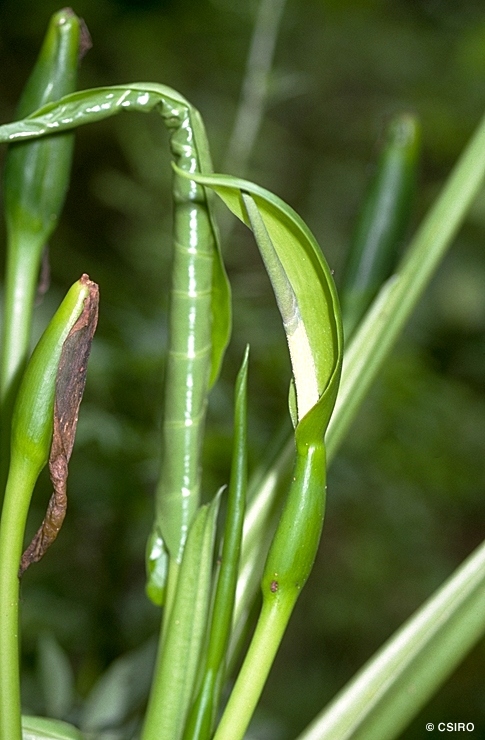
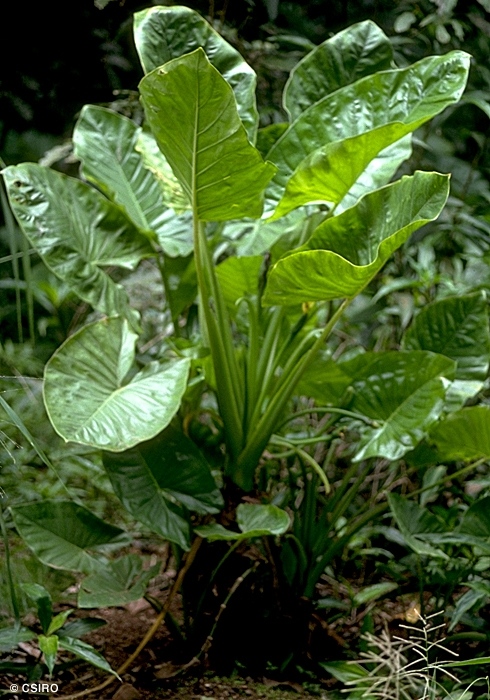
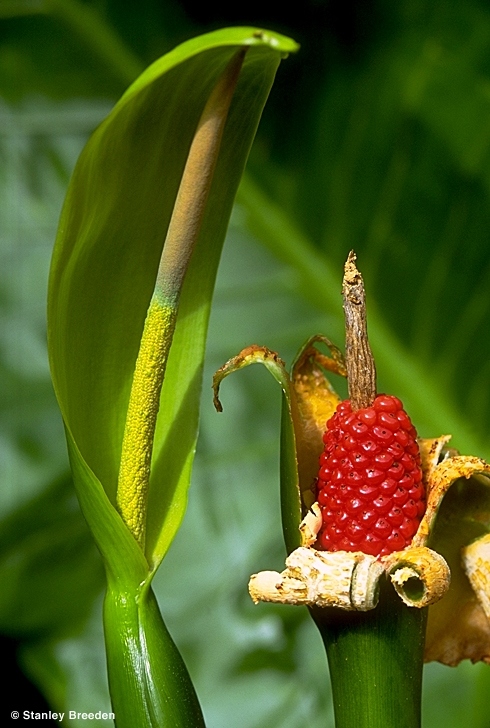
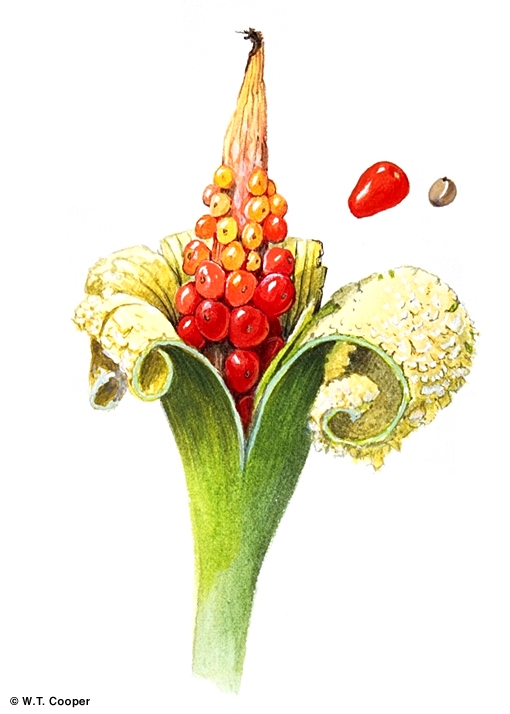

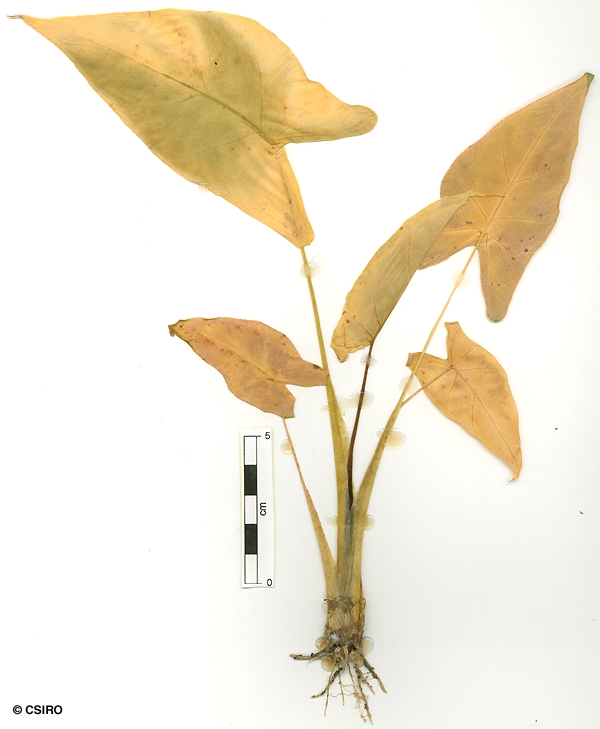

Domin, K. (1928) Bibliotheca Botanica 89(4): 504.
Cunjevoi; Spoon Lily
Although essentially a large herb this species can exceed 1 m in height and is therefore included as a shrub.
Inflorescence enclosed in a large bract (spathe). Flowers in a spike with male flowers on a section above the female flowers which are confined to the basal part. Uppermost part of the spike, about 40 mm long, sterile. A similar but smaller section separates the male and female sections. Female flowers globular. Stamens +/- sessile. Pollen white or translucent. Stigma 3-lobed.
Fruits produced in a dense spike which is enclosed in a persistent green bract (spathe). Individual fruits 7-11 mm long with a pink or red pericarp which resembles an aril but is produced by the wall of the ovary. Seeds 1or 2 per fruit, about 6-7 mm long. Testa thin and papery. Embryo about 5 mm long, broadly carrot-shaped (Daucus carota) or almost globular and difficult to distinguish the radicle from the plumule.
First pair of leaves peltate, leaf blades about 3.5-5 x 1.9-3.2 cm, apex acuminate, base cordate, petioles slender, about 3-7.5 cm long, bases sheathing the stem. Venation rather sparse but a fine intramarginal vein usually visible. At the tenth leaf stage: leaf blade +/- triangular, about 9-11 x 4-5 cm, apex acute, base sagittate, leaf peltate. Petioles about as long as the leaf blade, the lower half of the petiole winged and the basal part clasping the stem. Seed germination time 17 to 29 days.
Endemic to Australia, occurs in NEQ, CEQ and southwards as far as coastal central New South Wales. Altitudinal range from near sea level to 1000 m. Grows as an understory plant in a variety of types of rain forest but is favoured by disturbance.
A significant percentage of people believe that (when freshly cut) leaf stalks or stems of this species will act as an antidote for the sting of the Stinging Tree (Dendrocnide spp.). However, most people who have been badly stung tend to have little faith in its curative powers.
This species is dangerous, the tissues contain sharp needles of oxalate and if chewed cause painful irritation, burning and swelling of the lips and tongue. Fatal cases of poisoning have been reported in children. Everist (1974).
Fruits eaten by Lewin's Honeyeaters and Victoria's Riflebirds. Cooper & Cooper (1994).
Sap from cut stems and leaves spread over the area stung by stinging trees (Dendrocnide sp.) to help ease the pain. Cooper & Cooper (1994).
Sometimes cultivated for the large leaves and the strongly perfumed flowers.





